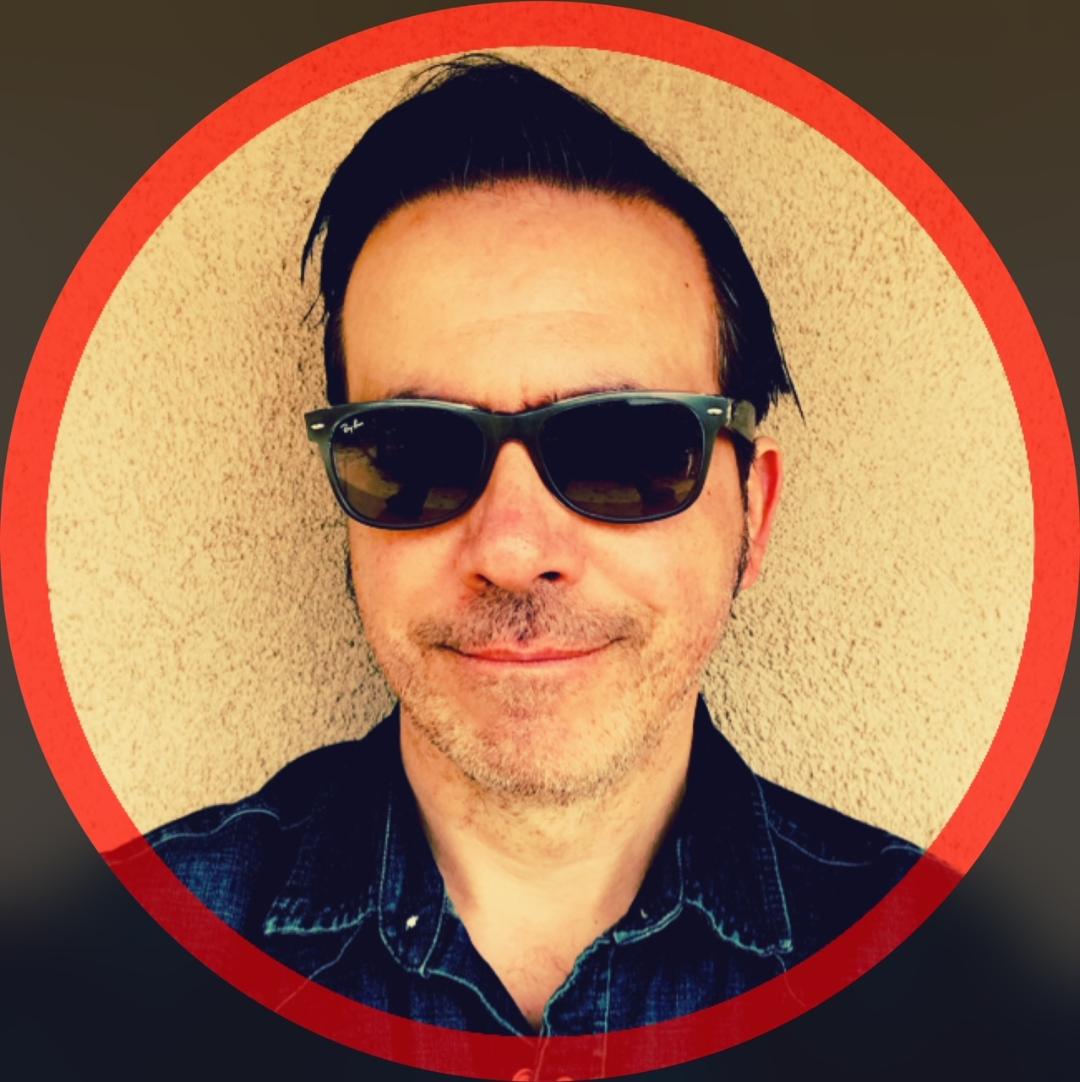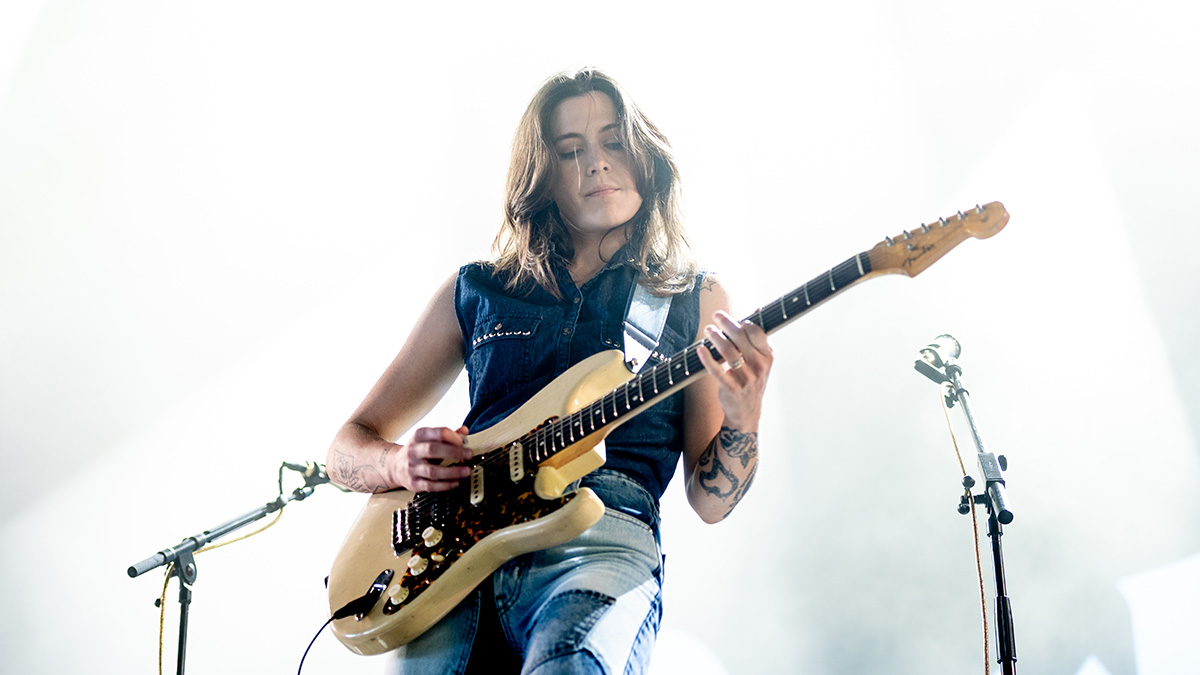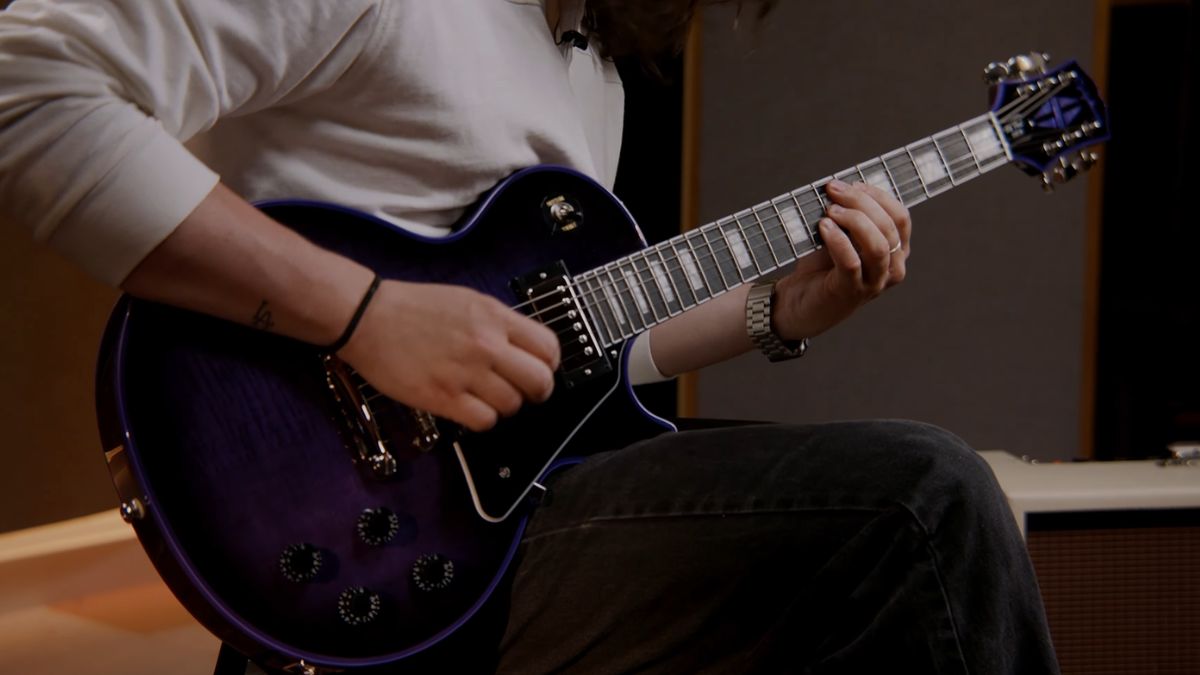Guide to the Songs and Instruments Featured on The Beatles' 'A Hard Day's Night' Album
There was no mania quite as manic as Beatlemania, and it was at its undisputed height in 1964.
In February, the Beatles had conquered the United States, the birthplace of their rock and roll idols, appearing twice on the Ed Sullivan Show and performing pandemonium-inducing shows at the Washington Coliseum and Carnegie Hall.
In early April, they owned the top five spots on the Billboard singles charts. To top it all off, they were about to become film stars, and they needed an album — their third — to coincide with the film’s release.
Titled A Hard Day’s Night, a 90-minute black-and-white comedy presented a typical day in the life of the Beatles, and took about 50 days to shoot — from March 2 to April 24. Producer Walter Shenson asked the band for “six or seven” songs for the film (It wound up being seven), a mixed bag of ballads and up-tempo numbers. Of course, they’d need twice that number of songs for a full album.
“There were times when we honestly thought we’d never get the time to write all the material,” Lennon said. “But we managed to get a couple of [songs] finished while we were in Paris.” While sessions for A Hard Day’s Night started in earnest at Abbey Road Studio Two on February 25 with Lennon’s “You Can’t Do That,” McCartney’s “Can’t Buy Me Love” was recorded January 29 at Pathé Marconi Studios in Paris.
The song, a bouncy, jazzy minor blues in C with an eight-bar major chorus, was finished in four takes after notable evolution from the first take to the last. It features a catchy, double-tracked solo break by Harrison, who employs his Gretsch Country Gentleman and his new toy, a 1963 Rickenbacker 360-12, which was overdubbed when he acquired the guitar in February.
Back at Studio Two, Harrison’s 12-string Rickenbacker was put to work on several songs, including “You Can’t Do That,” “I Should Have Known Better,” “I’m Happy Just to Dance With You” and the album’s stunning title track. The jangly 12-string Rickenbacker heralded the dawn of a new Beatles sound for 1964 — as if the chart-topping Fabs needed to reinvent themselves — and influenced a host of other guitarists, most notably Pete Townshend of the Who and Jim McGuinn of the Byrds.
Get The Pick Newsletter
All the latest guitar news, interviews, lessons, reviews, deals and more, direct to your inbox!
In addition to the Rickenbacker 360-12 and Gretsch Country Gentleman, Harrison used his Gibson J-160E and a nylon-stringed José Ramírez Guitarra de Estudio guitar, which he’d probably purchased at a guitar shop in Rathbone Place, London, where imported guitars were among the specialties.
Lennon alternated between his own Gibson J-160E, which he and Harrison had bought together in Liverpool in 1962, and his new black, or Jetglo, 1964 Rickenbacker 325 Capri. Lennon received the new guitar while the Beatles were resting in Miami, Florida, in mid-February. It had been sent directly to the Beatles’ hotel from Rickenbacker in California.
Lennon’s first appearance with the new Capri was on February 15 during rehearsals for their next appearance on the Ed Sullivan Show. When the band rehearsed the day before, Lennon was using his 1958 Capri — but that would be the last public appearance of that guitar in Lennon’s hands. The 1964 model (serial number DB122) had a thinner body than the 1958, a slightly smaller headstock with a white Rickenbacker nameplate, and a Rickenbacker Ac’cent vibrato unit. McCartney played his 1963 Hofner 500/1 bass. Lennon and Harrison played through two Vox AC50 amps while McCartney favored a hefty Vox AC100.
The quick evolution of songs was common during this period, as evidenced by the progress of McCartney’s gentle ballad “And I Love Her” over the course of three days. As can be heard on Anthology 1, the band originally attempted this tune with their typical A Hard Day’s Night setup — McCartney on his Hofner 500/1 bass, Lennon on his Gibson J-160E acoustic, Harrison on his 12-string Rickenbacker and Starr on drums, including heavy use of the floor tom for accents. Not until the second take from the third day of sessions did they nail this tune — with Harrison switching to his Ramírez Spanish guitar and Ringo forgoing the drums altogether by playing bongos and claves, another first for the band.
Recording of the movie songs chugged along at Studio Two throughout the winter, including Lennon’s ballad, “If I Fell.” With its intricate chord structure and complex harmonies sung by Lennon and McCartney — recorded together at one microphone — the song was completed in 15 takes, all on February 27.
It is noted for being the most chord-intensive song the band had recorded so far, with changes taking place with almost every note sung, and also for its inclusion of a rare studio error: McCartney’s cracking voice on the second verse, at the end of the line “would be sad if our new love was in vain” (stereo mix only).
A Hard Day’s Night was the first Beatles album to contain only original songs, all of which are credited to Lennon/McCartney, and the only Beatles album on which Lennon is the dominant songwriter, having written 10 of the 13 songs. McCartney wrote “Can’t Buy Me Love,” “And I Love Her” and “Things We Said Today.”
Whether you’re talking about the film, the album or the song, A Hard Day’s Night was another massive hit that further fueled the fire of Beatlemania.
A HARD DAY'S NIGHT: EXTRA FACTS
Recorded: January 29, February 25–27, March 1, April 16 and June 1 & 2, 1964
Location: Abbey Road Studio Two and EMI Pathé Marconi Studios, Paris
Released: July 10, 1964
Track Listing:
- A Hard Day’s Night
- I Should Have Known Better
- If I Fell
- I’m Happy Just to Dance with You
- And I Love Her
- Tell Me Why
- Can’t Buy Me Love
- Any Time at All
- I’ll Cry Instead
- Things We Said Today
- When I Get Home
- You Can’t Do That
- I’ll Be Back
Related Singles and EPs: “Can’t Buy Me Love” / “You Can’t Do That” (released March 20, 1964, Parlophone); “A Hard Day’s Night” / “Things We Said Today” (released July 10, 1964, Parlophone); Long Tall Sally EP, featuring “Long Tall Sally,” “I Call Your Name,” “Slow Down” and “Matchbox” (released June 19, 1964)
Yeah, Yeah …
"I'll Cry Instead": This catchy Lennon song, recorded in two parts on June 1 and edited together, rarely gets credit for being one of the first country-rock songs.
… No
"I Should Have Known Better": Lyrically and musically, this is one of the band's least-distinguished songs of the period, and its ultra-simple-even-for-1964 12-string Rickenbacker solo represents a wasted opportunity.
Damian Fanelli is the online managing editor at Guitar World.

Damian is Editor-in-Chief of Guitar World magazine. In past lives, he was GW’s managing editor and online managing editor. He's written liner notes for major-label releases, including Stevie Ray Vaughan's 'The Complete Epic Recordings Collection' (Sony Legacy) and has interviewed everyone from Yngwie Malmsteen to Kevin Bacon (with a few memorable Eric Clapton chats thrown into the mix). Damian, a former member of Brooklyn's The Gas House Gorillas, was the sole guitarist in Mister Neutron, a trio that toured the U.S. and released three albums. He now plays in two NYC-area bands.










